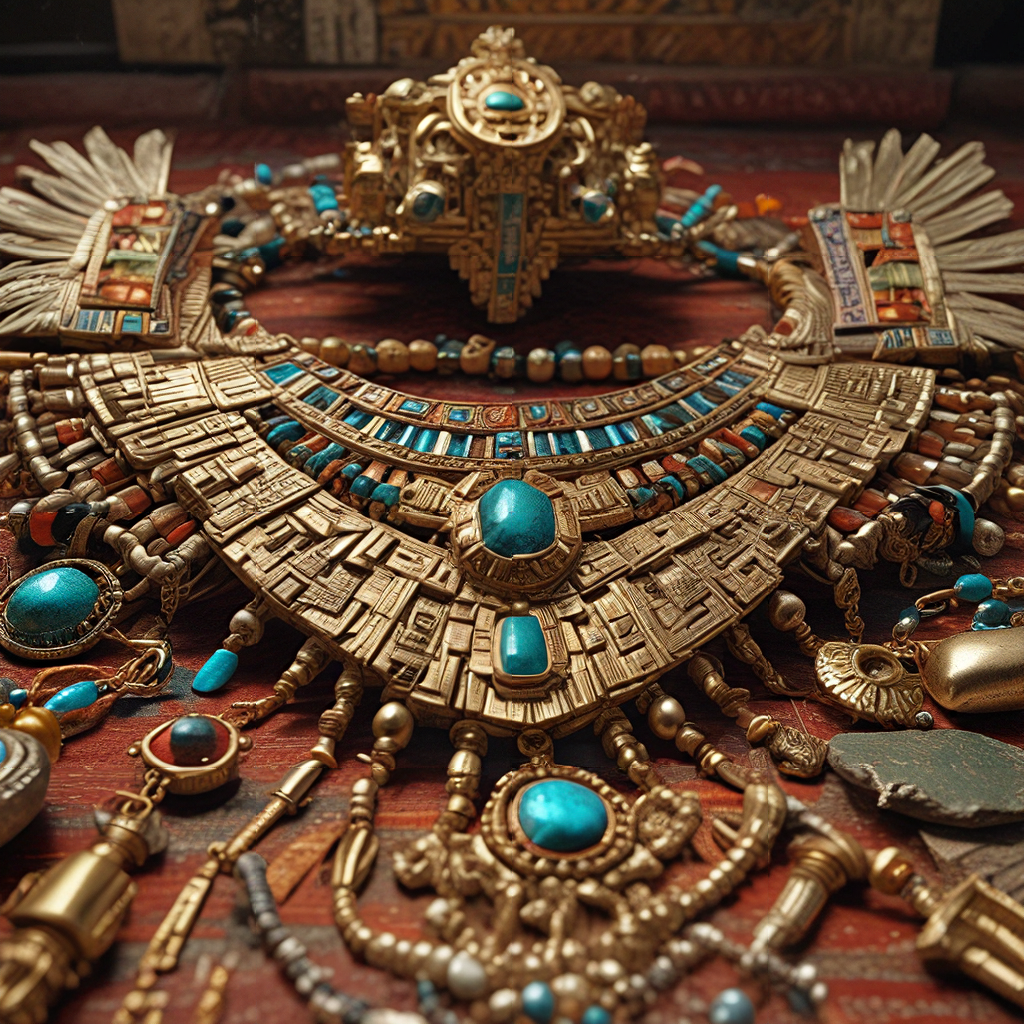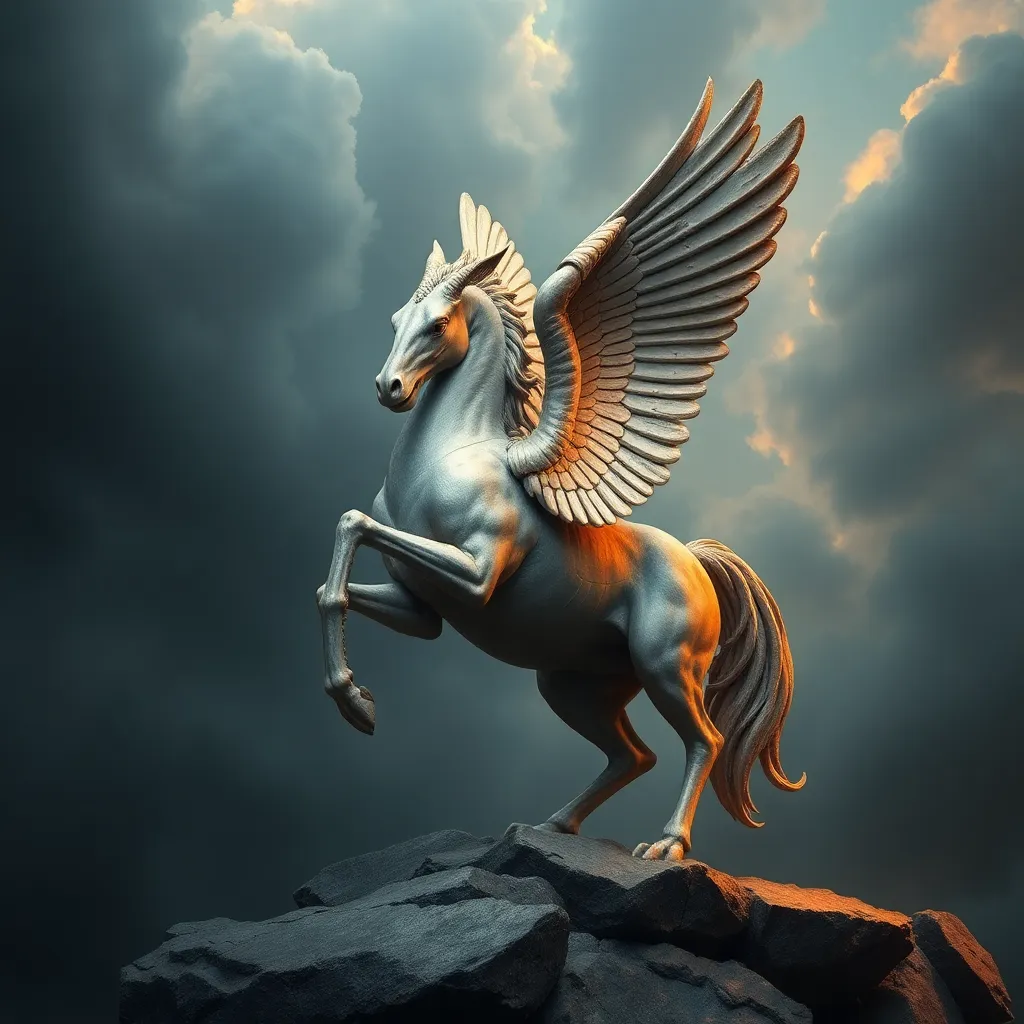Incan Mythical Jewelry: Treasures of the Gods
The Incan Empire, known for its advanced civilization and intricate craftsmanship, left behind a rich legacy of breathtaking art and artifacts. Among these treasures are pieces of jewelry that stand out as more than mere adornment; they are powerful symbols of the Incan belief system, representing the divine and the connection between humanity and the cosmos. This article delves into the captivating world of Incan mythical jewelry, exploring its origins, symbolism, and enduring influence.
The Divine Origins of Incan Jewelry
Incan mythology holds that the gods themselves were the originators of jewelry. It was believed that the first humans, created by the Sun God Inti, received their knowledge and skills from the divine realm, including the art of crafting exquisite jewelry. This intricate art form was seen as a gift from the gods, a way to connect with the divine and honor their power. The Incas believed that jewelry possessed spiritual significance, and its creation was a sacred act, embodying the connection between humans and the supernatural world.
Representations of Incan Deities in Jewelry
Incan jewelry often featured representations of their powerful deities. The Sun God Inti, the most important deity in the Incan pantheon, was frequently depicted in jewelry using symbols like the sun, golden discs, and rays emanating from a central point. The Moon Goddess Mama Killa, associated with fertility and the night sky, was represented by silver discs and crescent moon shapes. The powerful god Viracocha, the creator of the world and all living things, was often depicted in jewelry as a serpent, representing his connection to the earth and the underworld. These representations were not mere decorative elements; they served as powerful reminders of the gods' presence in the lives of the Incas, reinforcing their faith and reverence.
Symbolism and Meaning in Incan Jewelry
Beyond specific deities, Incan jewelry was imbued with complex symbolism, reflecting the interconnectedness of all things in the Incan worldview. The intricate designs and patterns found in Incan jewelry often held rich, layered meanings. For example, the knot (khipu) was a crucial communication tool, and it was also incorporated into jewelry, representing the interconnectedness of life and the complex social structure of the Incan Empire. The serpent, symbolizing transformation, fertility, and connection to the earth, was frequently incorporated as a motif. Birds, particularly the condor, were associated with the sky and the divine realm, representing freedom and aspirations.
The Role of Jewelry in Incan Rituals and Ceremonies
Jewelry was an integral part of Incan rituals and ceremonies, serving as a bridge between the human world and the divine realm. During religious festivals and ceremonies, the Incan elite adorned themselves with elaborate jewelry, offering precious offerings to the gods. Jewelry was used to signify status and power, with certain designs and materials reserved for royalty and priests. The use of jewelry in rituals served to strengthen the connection between the Incas and their gods, ensuring divine favor and prosperity for their empire.
The Use of Precious Metals and Stones
Incan jewelry was crafted using a wide range of precious metals and stones. Gold, representing the Sun God Inti's power and brilliance, was highly valued and used extensively in jewelry. Silver, associated with the Moon Goddess, was also prized and used in various ornaments. Other stones, such as lapis lazuli, turquoise, and jade, were also incorporated into jewelry, each holding unique symbolic meanings. The use of these precious materials not only enhanced the beauty of the jewelry but also reflected the Incan belief in the inherent power and spiritual significance of the natural world.
The Use of Precious Metals and Stones
Incan jewelry was crafted using a wide range of precious metals and stones, each holding special significance. Gold, representing the Sun God Inti's power and brilliance, was highly valued and used extensively in jewelry. It was believed that gold was a gift from the Sun God, and it was used to create intricate ornaments for royalty and priests. Silver, associated with the Moon Goddess Mama Killa, was also prized and used in various ornaments. It symbolized the moon's gentle light and its influence on the Earth.
Other stones, such as lapis lazuli, turquoise, and jade, were also incorporated into jewelry, each holding unique symbolic meanings. Lapis lazuli, with its vibrant blue color, was associated with the sky and the divine realm. It was believed to have protective powers and was often used in amulets. Turquoise, a stone with a distinctive blue-green color, symbolized prosperity, protection, and good fortune. It was widely used in jewelry and other decorative objects. Jade, a durable and beautiful stone, was associated with the earth and its resources. It was believed to have healing properties and was often used in amulets and ornaments.
The Incan artisans were skilled in working with these precious metals and stones, creating intricate designs and delicate details. They used techniques such as casting, hammering, and engraving to create jewelry that was both beautiful and durable. The use of these precious materials not only enhanced the beauty of the jewelry but also reflected the Incan belief in the inherent power and spiritual significance of the natural world.
Theories of the Origin of Incan Jewelry
The exact origins of Incan jewelry are a subject of ongoing debate among archaeologists and historians. While the Incas themselves believed that their knowledge of jewelry-making was a gift from the gods, researchers have proposed various theories to explain the development of this art form.
One theory suggests that the Incan style of jewelry evolved from earlier traditions in the Andean region. The Chavin culture, which flourished in the northern Andes from 900 to 200 BC, was known for its intricate metalwork and elaborate jewelry. The Incas may have learned from and adapted these techniques, incorporating their own unique motifs and symbolism.
Another theory points to the influence of other ancient civilizations, such as the Olmec and Maya, who were known for their sophisticated jewelry-making skills. It is possible that these cultures had some influence on Incan art and design, although there is no concrete evidence to support this theory.
Ultimately, the exact origin of Incan jewelry remains a mystery. It is likely that the Incan style was influenced by a combination of factors, including local traditions, contact with other cultures, and their own unique beliefs and symbolism.
The Influence of Astronomy and Cosmology
The Incas had a deep understanding of astronomy and cosmology, and this knowledge was reflected in their jewelry. They meticulously observed the stars and planets, believing that the movements of celestial bodies influenced events on Earth. The Sun God Inti, who played a central role in Incan mythology, was associated with the sun and its life-giving energy. The Moon Goddess Mama Killa, was linked to the moon and its influence on tides and fertility.
Incan jewelry often incorporated celestial motifs, such as the sun, moon, stars, and constellations. The use of these symbols reflected the Incan belief in the interconnectedness of the universe and the power of the cosmos. For example, the use of sun discs, stars, and crescent moon shapes in jewelry was not just a decorative choice but also a way to honor and connect with the divine forces that governed the natural world.
The Incan understanding of astronomy and cosmology had a profound impact on their art and culture, and this is evident in their jewelry. The intricate designs and symbolism found in Incan jewelry reflect their profound respect for the cosmos and their belief that the universe was a source of power and inspiration.
The Connection to the Earth and Its Resources
Beyond celestial inspiration, Incan jewelry also drew heavily on the Earth's natural resources. The Incas viewed the Earth as a sacred entity, a source of life and sustenance. Their jewelry reflected this respect for the planet, incorporating motifs that symbolized the Earth’s bounty and its connection to the divine.
The serpent, a common motif in Incan jewelry, symbolized transformation, fertility, and connection to the earth. The serpent's connection to the underworld, a place of rebirth and renewal, was also significant. The use of precious stones, such as emeralds, turquoise, and jade, all of which were mined in the Andes, further strengthened the link between Incan jewelry and the Earth's treasures.
The Incan understanding of the interconnectedness of all things, from the heavens to the Earth, is reflected in the unique symbology and design of their jewelry. The intricate designs and motifs were not just decorative; they were a powerful testament to their profound respect for the natural world and their belief in the cyclical nature of life.
The Legacy of Incan Jewelry in Modern Art and Culture
The legacy of Incan jewelry continues to inspire and influence artists and designers today. The intricate designs, rich symbolism, and use of precious metals and stones have captivated generations of art enthusiasts. Modern artists and jewelers often draw inspiration from Incan motifs and techniques, integrating them into contemporary designs.
The enduring appeal of Incan jewelry lies not only in its aesthetic beauty but also in its profound cultural significance. It offers a glimpse into the rich and complex world of the Incan civilization, their beliefs, values, and traditions. By studying and appreciating Incan jewelry, we gain a deeper understanding of the Incan worldview and its enduring influence on art, culture, and society.
FAQ
Q: What were the most common materials used in Incan jewelry?
A: Incan jewelry was primarily made of gold, silver, turquoise, lapis lazuli, and jade. Gold and silver were favored for their symbolic connection to the Sun God Inti and the Moon Goddess Mama Killa, respectively.
Q: What were some of the common motifs found in Incan jewelry?
A: Common motifs included the sun, moon, stars, serpents, birds, knots, and geometric patterns. These motifs often carried symbolic meanings related to Incan mythology, cosmology, and the natural world.
Q: Where can I find examples of Incan jewelry today?
A: Examples of Incan jewelry can be found in museums around the world, including the Museo Nacional de Antropología y Arqueología in Lima, Peru, and the Metropolitan Museum of Art in New York City.



